-
 The Witness: UncertaintyBFK Rives Paper, Cotton Embroidery Floss, PH Neutral adhesive, Acid Free Tissue Paper, Human Hair, Abalone, Sterling Silver Head Pins
The Witness: UncertaintyBFK Rives Paper, Cotton Embroidery Floss, PH Neutral adhesive, Acid Free Tissue Paper, Human Hair, Abalone, Sterling Silver Head Pins- 17"h
- 13.5"w
- 12.5"d
$1,200 -
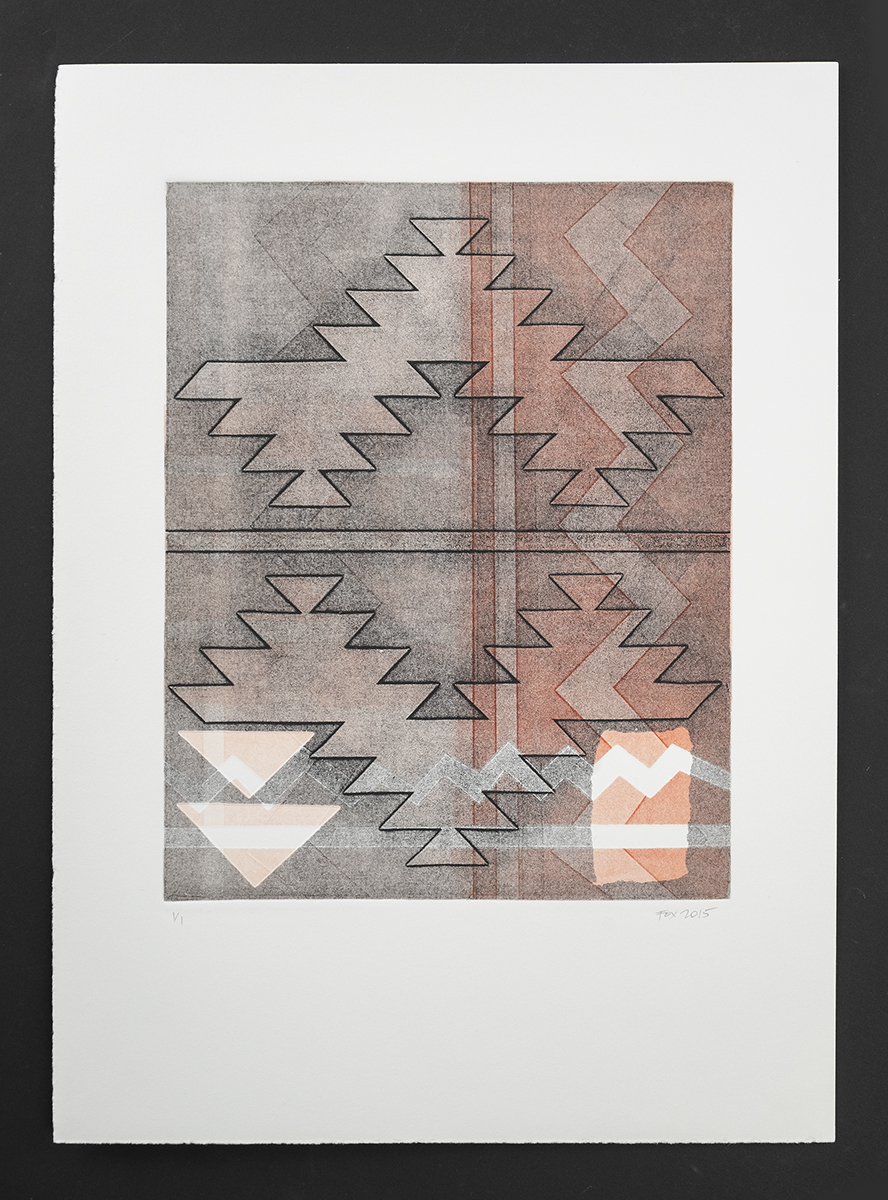 Untitled “Basket Design” (Grey)Monotype
Untitled “Basket Design” (Grey)Monotype- 15"h
- 11"w
$300 -
 Untitled “Basket Design” (Red)Monotype
Untitled “Basket Design” (Red)Monotype- 15"h
- 11"w
$300 -
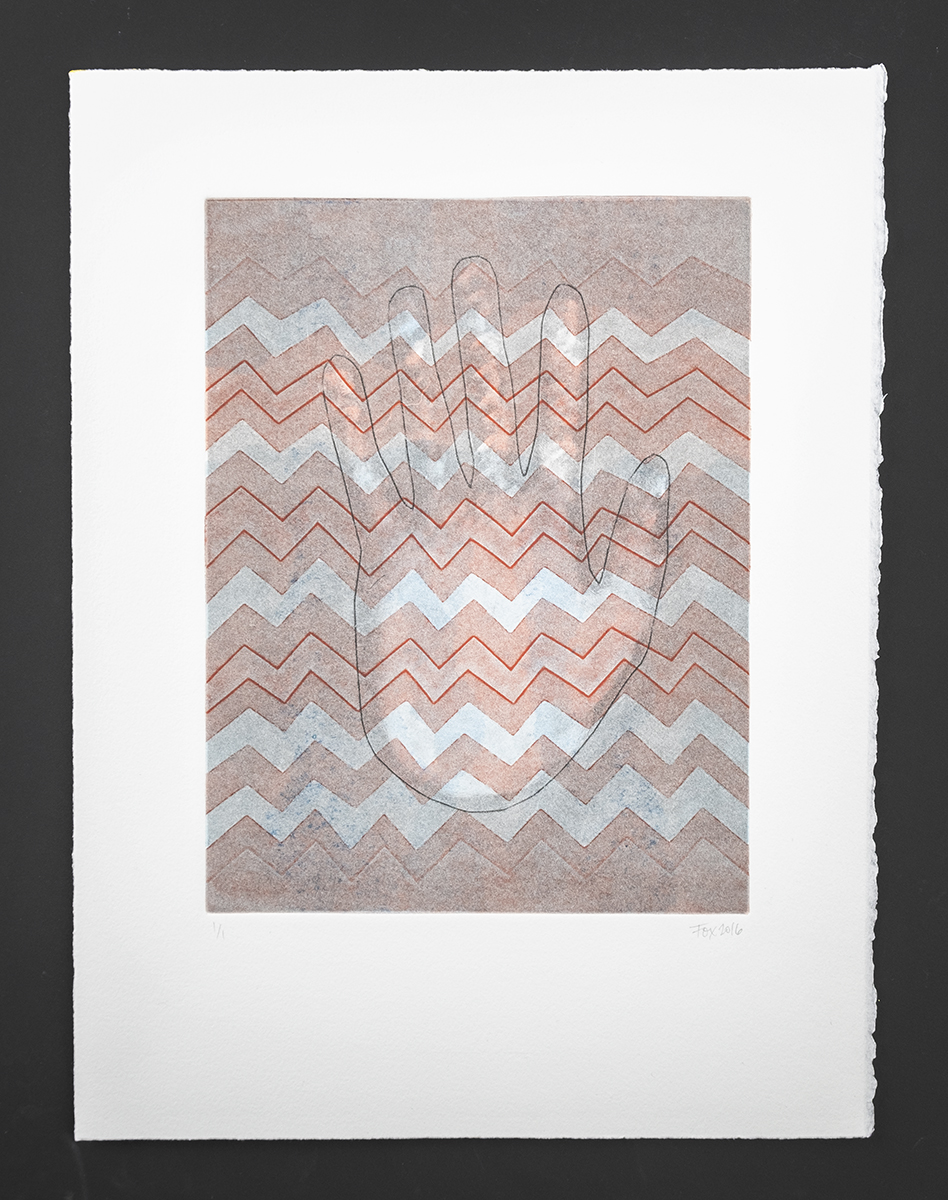 Untitled “Hand” (Red & Blue)Monotype
Untitled “Hand” (Red & Blue)Monotype- 15"h
- 11"w
$300 -
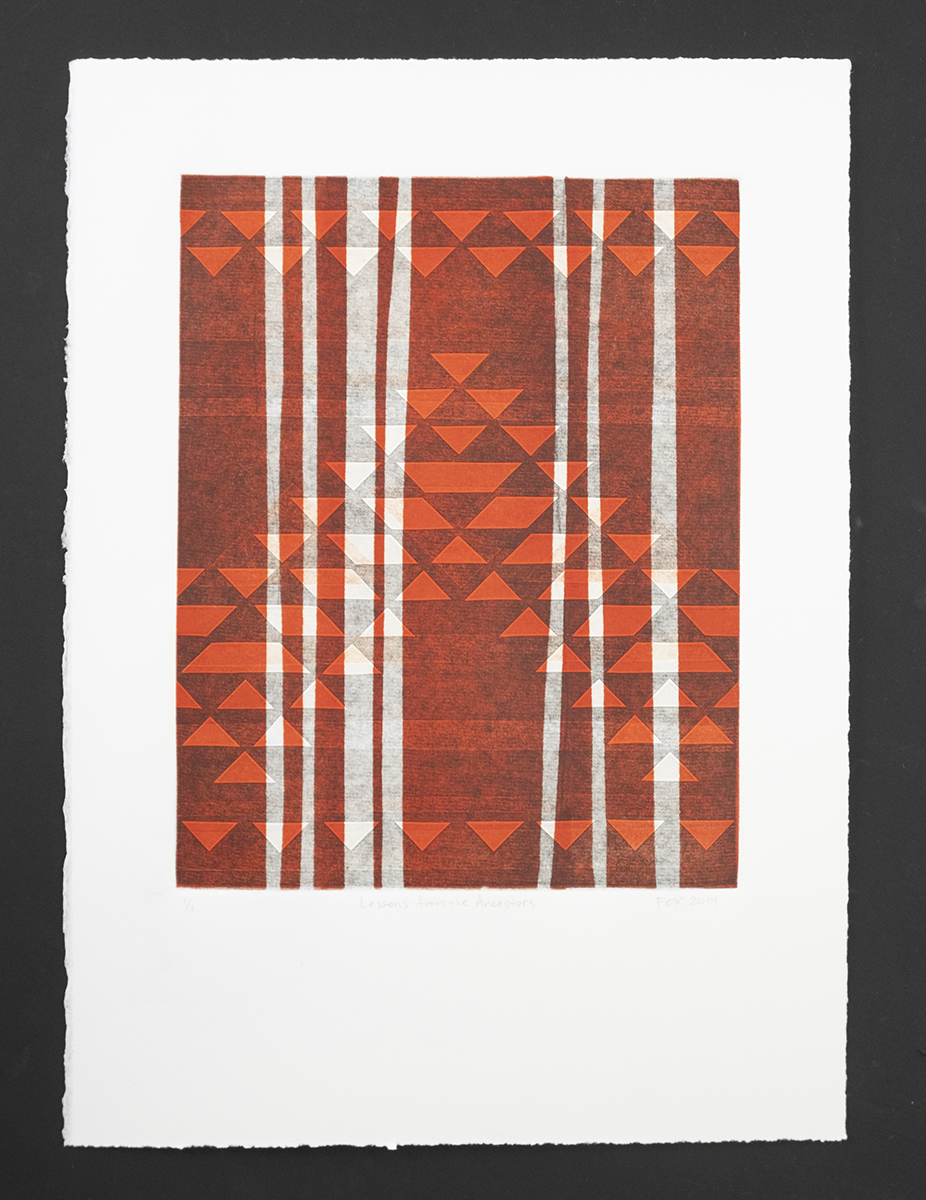 Lessons from the AncestorsMonotype
Lessons from the AncestorsMonotype- 15"h
- 11"w
$300
-
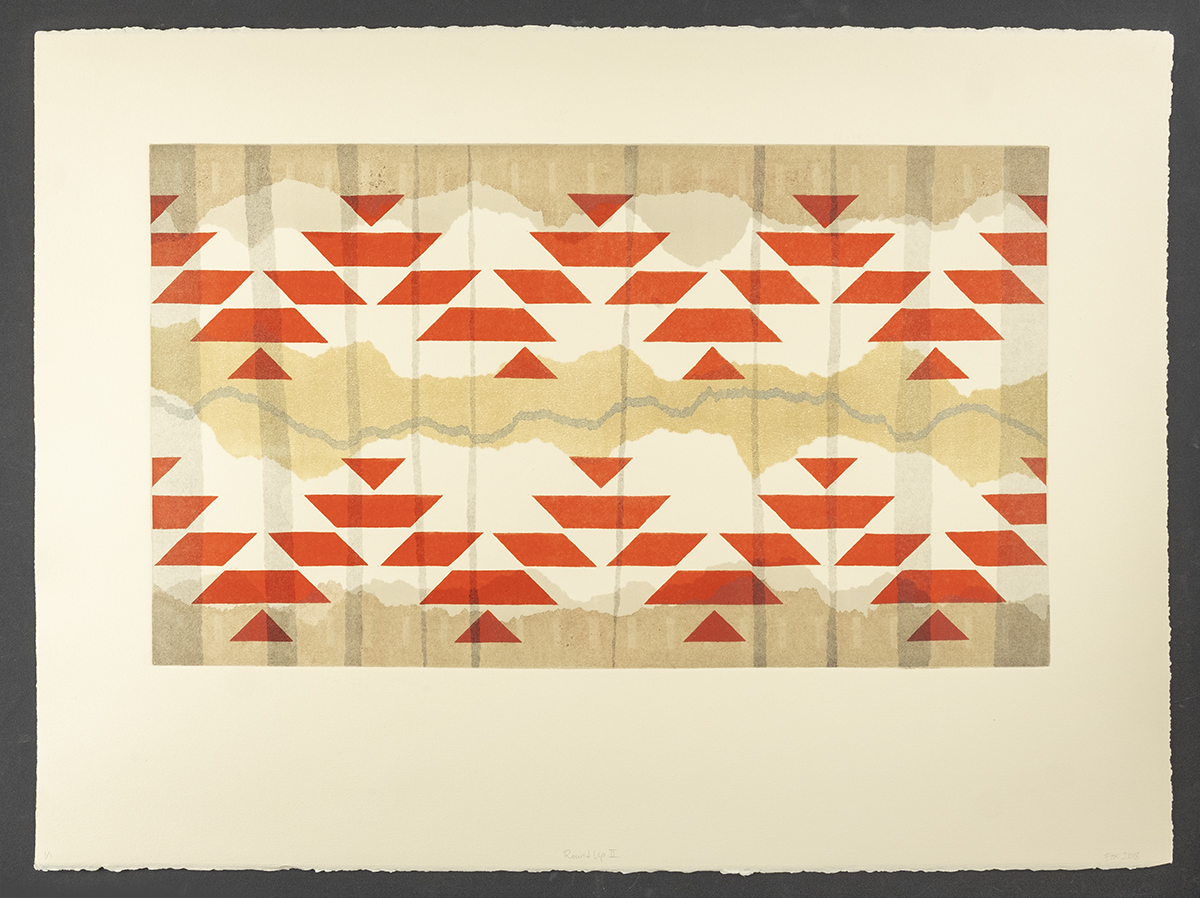 Round Up IIMonotype
Round Up IIMonotype- 22"h
- 30"w
SOLD -
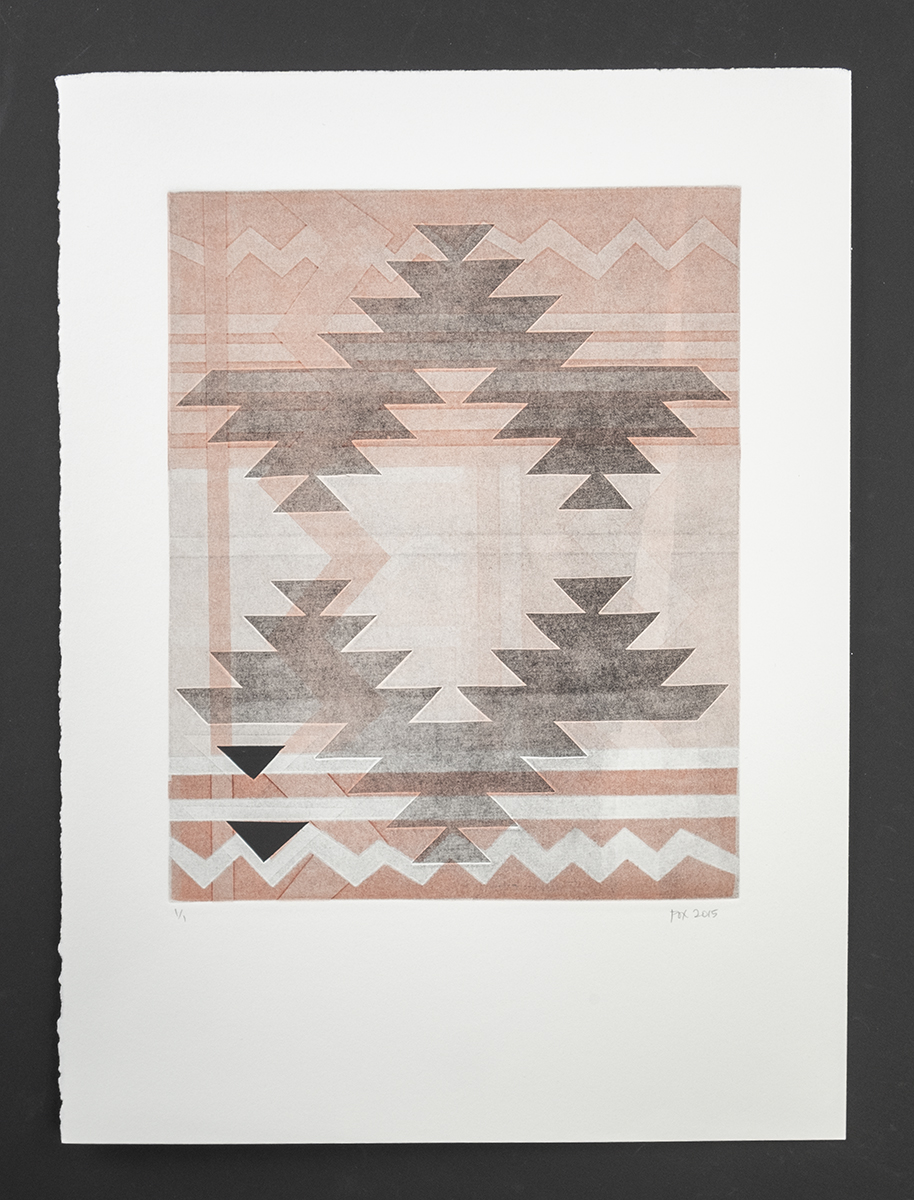 Untitled “Basket Design” (Pink)Monotype
Untitled “Basket Design” (Pink)Monotype- 15"h
- 11"w
SOLD -
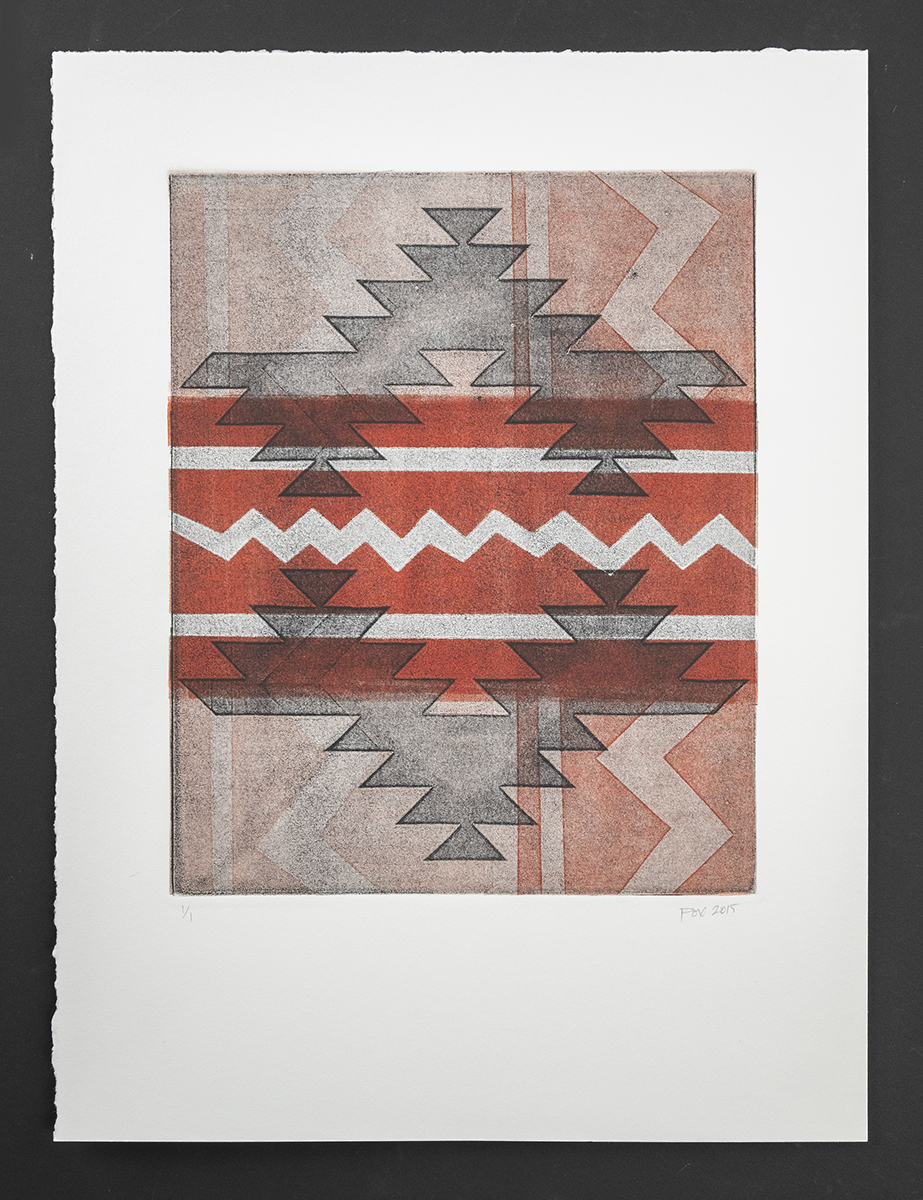 Untitled “Basket Design” (Red Band)Monotype
Untitled “Basket Design” (Red Band)Monotype- 15"h
- 11"w
SOLD -
 Untitled “Basket Design” (Black)Monotype
Untitled “Basket Design” (Black)Monotype- 15"h
- 11"w
SOLD -
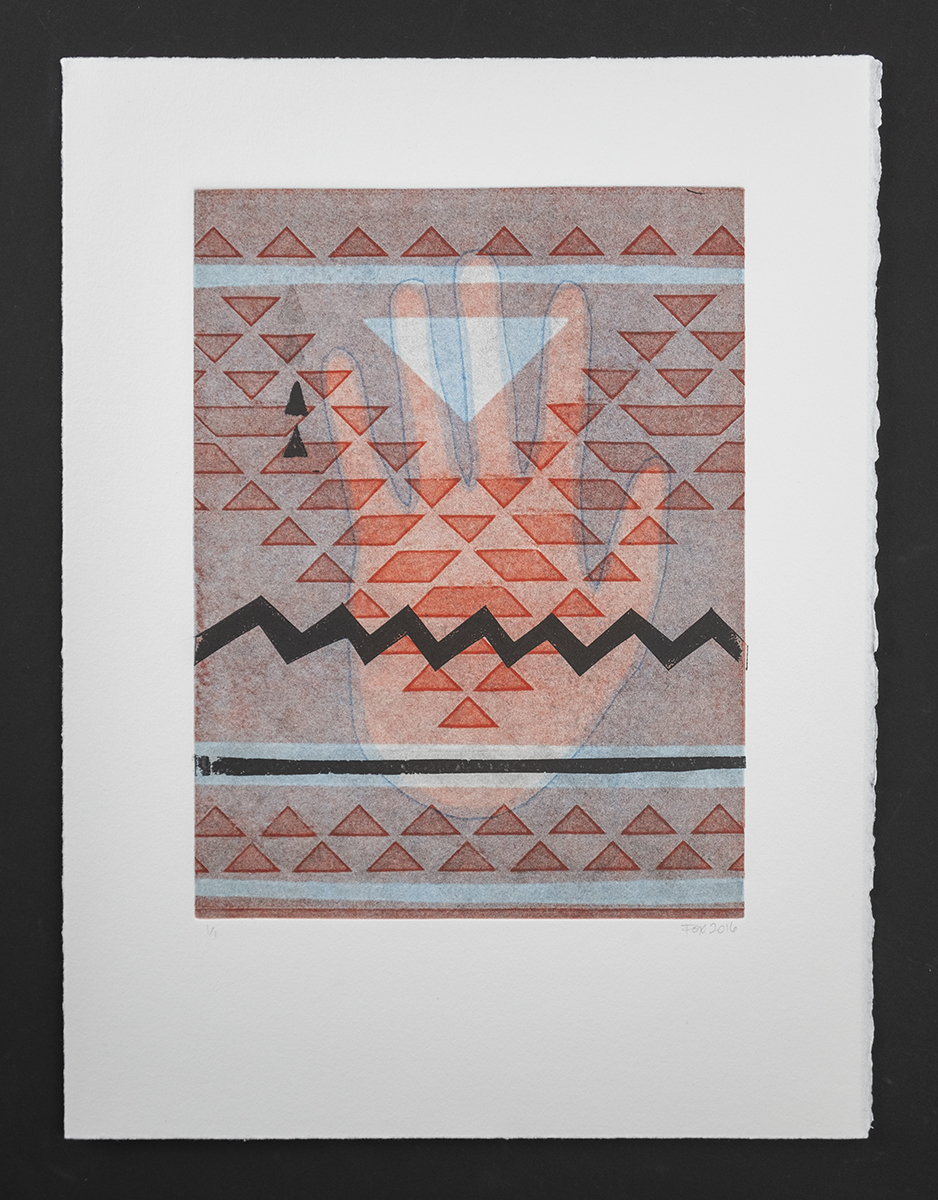 Untitled “Hand” (Blue Triangle)Monotype
Untitled “Hand” (Blue Triangle)Monotype- 15"h
- 11"w
SOLD -
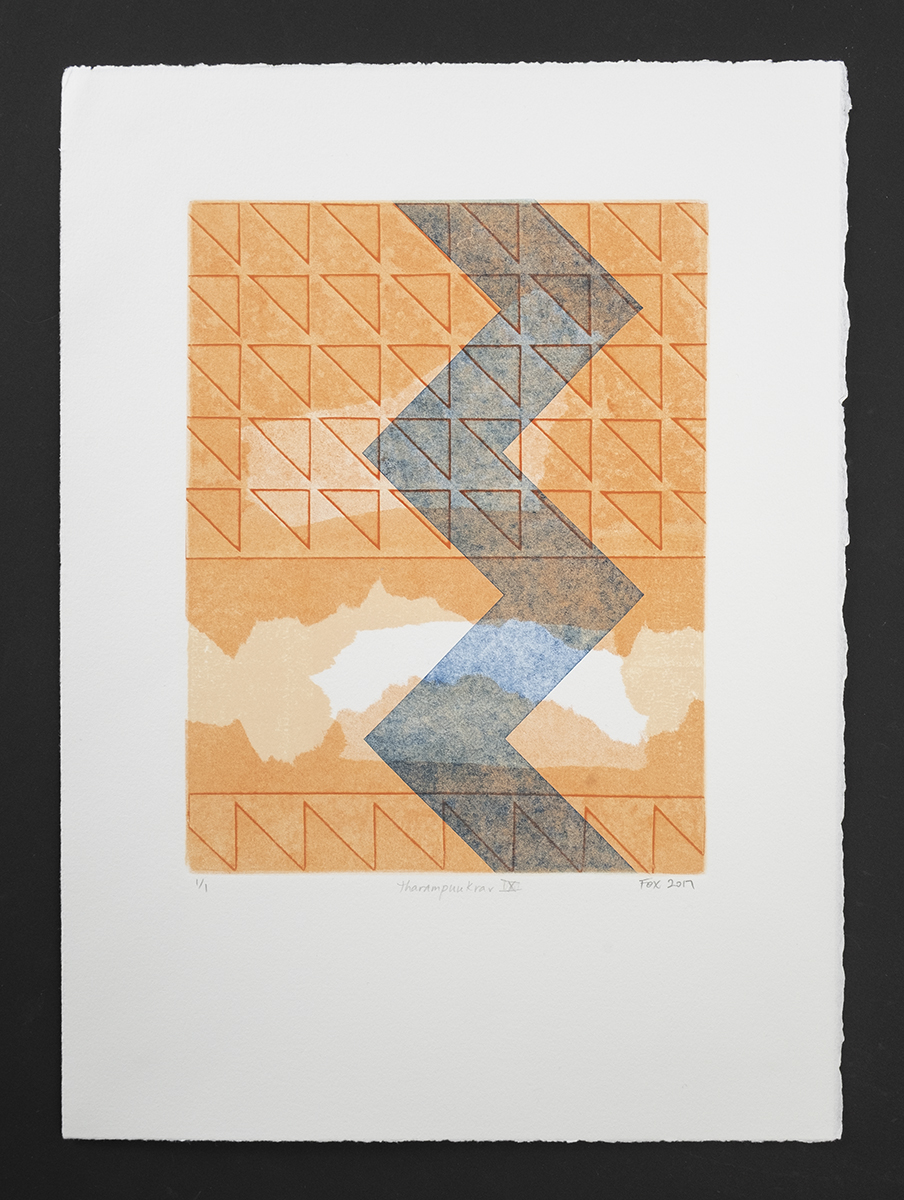 Thrampuukrav IXMonotype
Thrampuukrav IXMonotype- 15"h
- 11"w
SOLD -
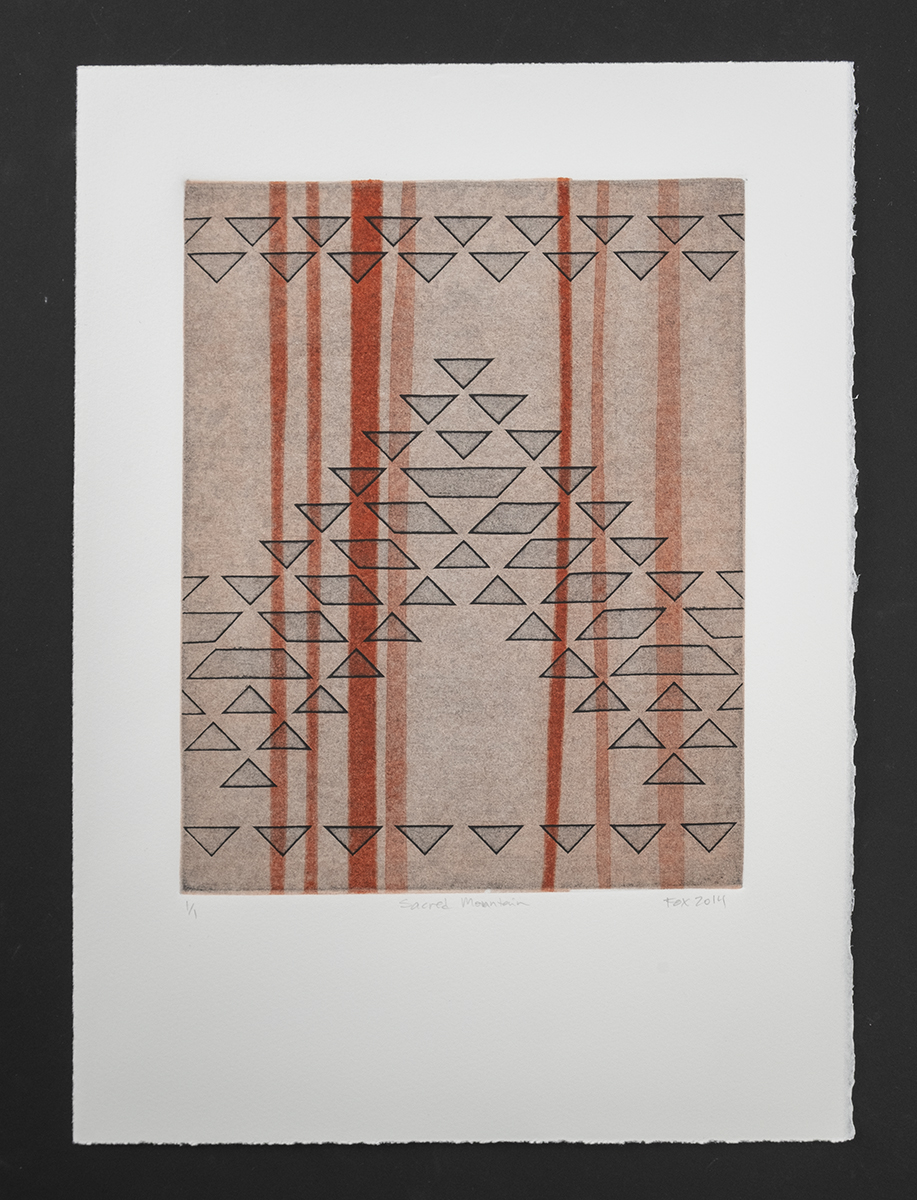 Sacred MountainMonotype
Sacred MountainMonotype- 15"h
- 11"w
SOLD -
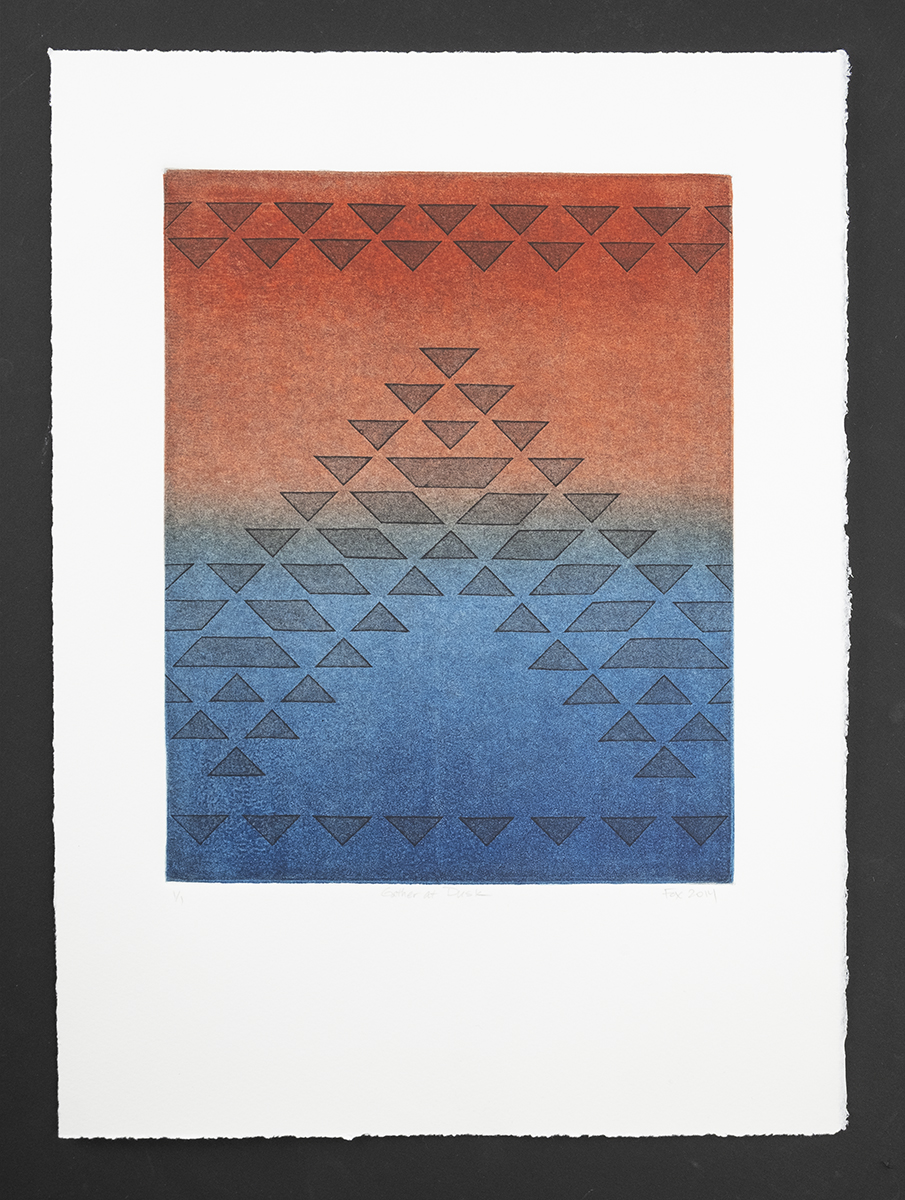 Gather at DuskMonotype
Gather at DuskMonotype- 15"h
- 11"w
SOLD -
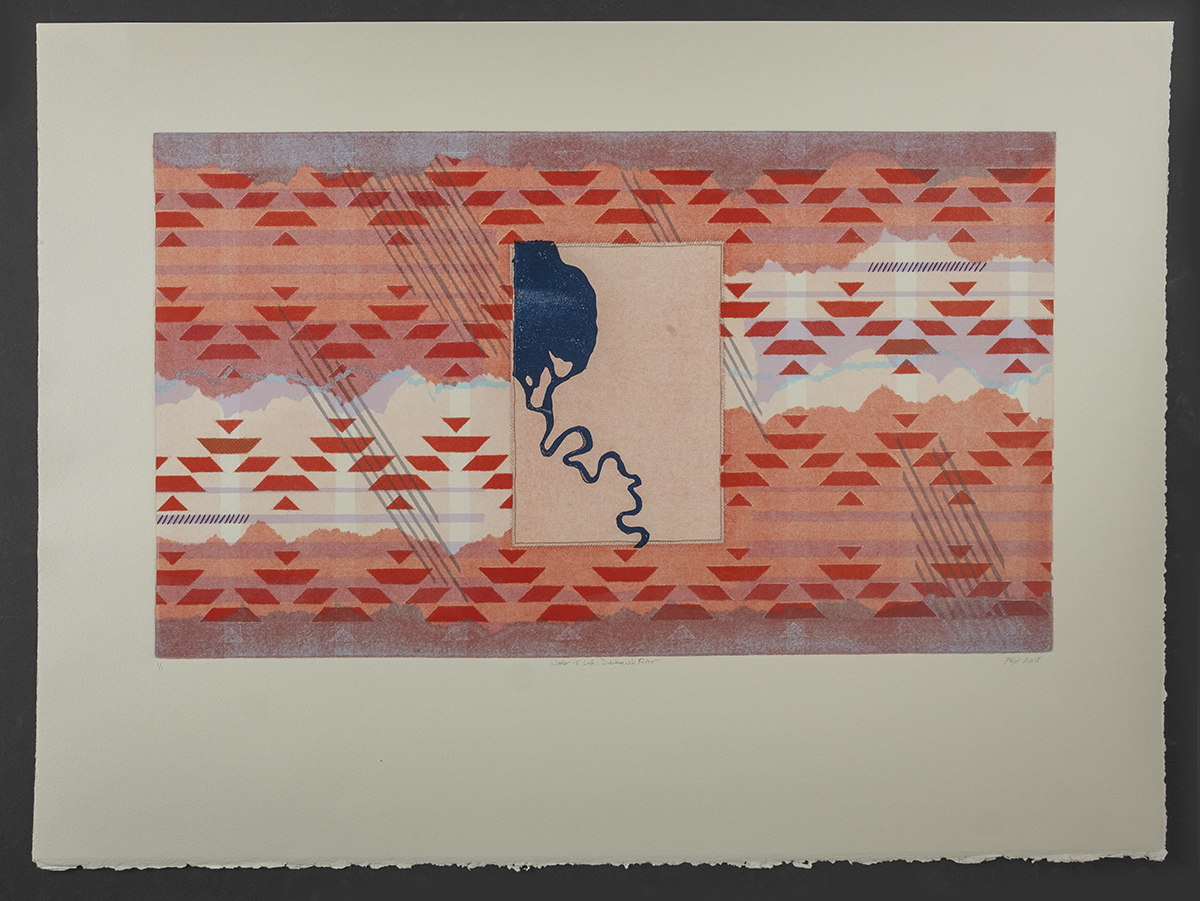 Water is Life – Duwamish RiverMonotype w/ thread, detailing w/ graphite and color pencil
Water is Life – Duwamish RiverMonotype w/ thread, detailing w/ graphite and color pencil- 22"h
- 33"w
SOLD -
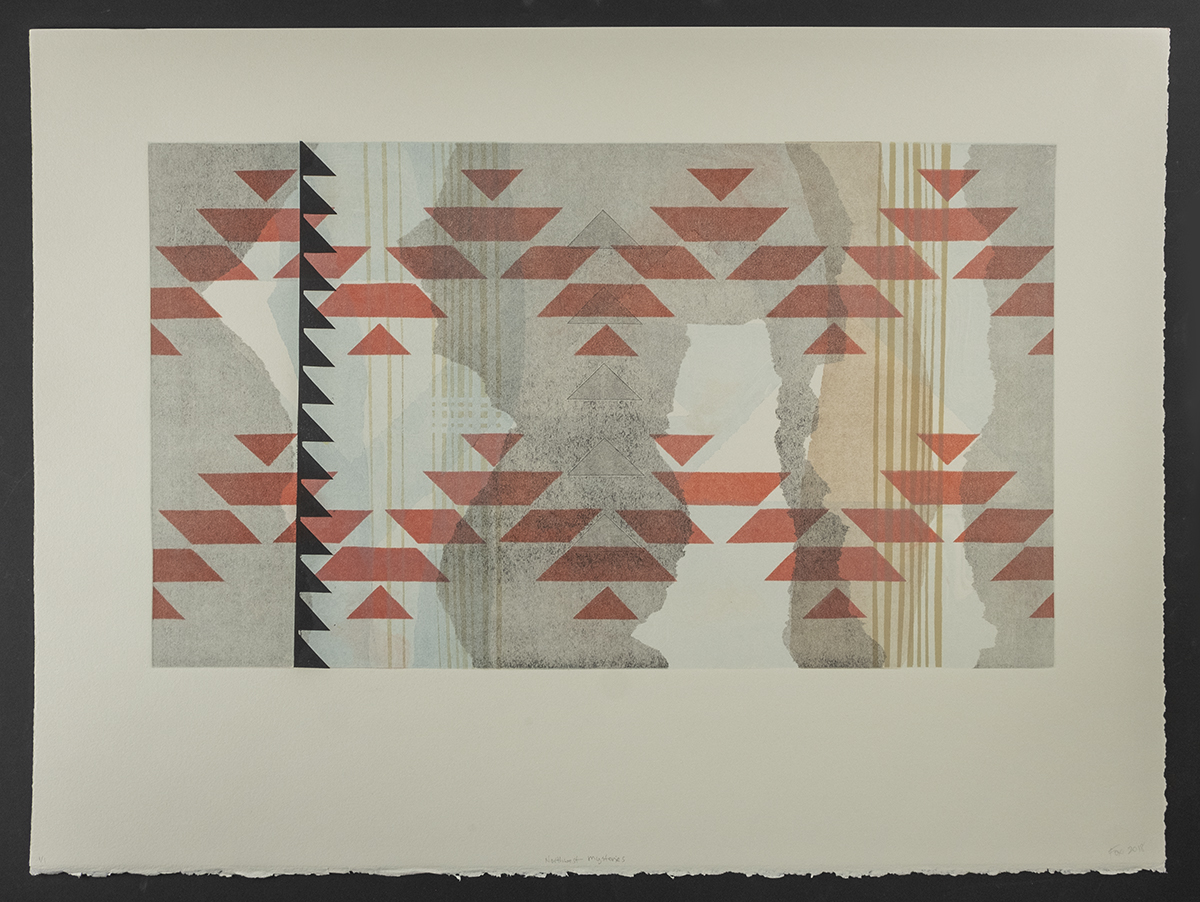 Northwest MysteriesMonotype
Northwest MysteriesMonotype- 22"h
- 30"w
SOLD -
 Horse Blanket IMonotype
Horse Blanket IMonotype- 22"h
- 30"w
SOLD -
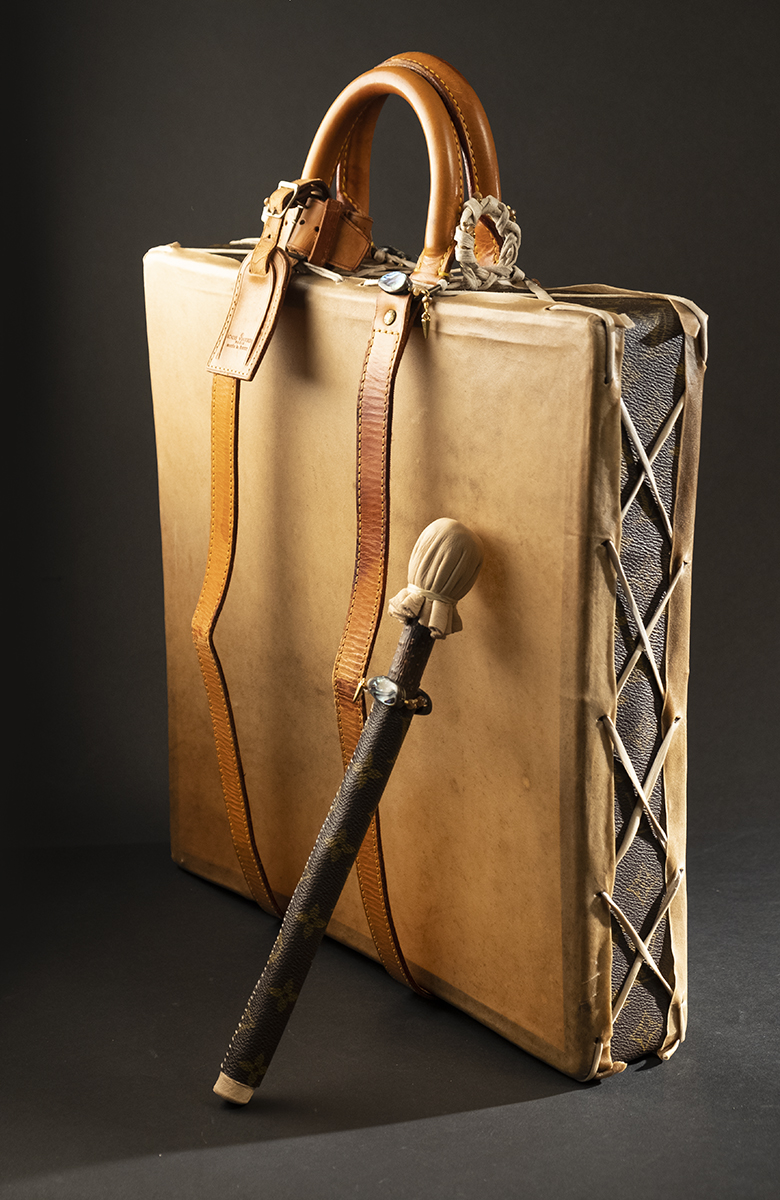 Karuk Louis Vuitton Drum 1.1 (with Beater)Louis Vuitton Bandouliere Bag Parts, Abalone Beads, Pewter Beads, Artificial Sinew, Wire, Elk Rawhide, Cedar
Karuk Louis Vuitton Drum 1.1 (with Beater)Louis Vuitton Bandouliere Bag Parts, Abalone Beads, Pewter Beads, Artificial Sinew, Wire, Elk Rawhide, Cedar- 19.5"h
- 15"w
- 3.5"d
SOLD
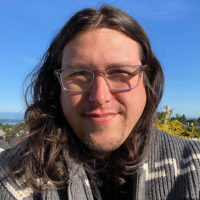
“Over the last decade my art practice has focused mainly on reinterpreting traditional Karuk basketry designs into contemporary art mediums, such as monotype prints and paintings. I develop my compositions by pairing and layering geometric tribal patterns with organic shapes. The shapes normally reference landscape elements, like mountains or water.
When approaching a new print series, I begin by looking at historical baskets for inspiration. A traditional basket starts with the gathering and preparation of materials. It can take a year of collecting and processing before any weaving takes place. I think about the people who made them, the knowledge that was passed down from previous generations, and the time and effort that brought these baskets into existence. Each basket tells a unique story, and is a memory from a way of life that has existed since time immemorial.
I have recently embarked on a new body of work that explores combining traditional Karuk items and regalia with contemporary designer brand materials and objects. I see this as a way of exploring the connections between pre-contact Karuk cultural practices of accumulating wealth objects for increased social prestige with my current privileges as an urban upper middle class U.S. citizen.
The relationship that Indigenous people have with land is often presented as mystical, but it was built over millennia as our ancestors interacted with the natural environment. I do not believe it is wholly dependent on any specific physical location; instead, it is a way of existing in the world around us. Tommy Orange (Cheyenne/Arapaho) touched on this in his debut novel, There There, when he wrote, “Being Indian has never been about returning to the land. The land is everywhere or nowhere.”
All the work I make is a deliberate continuance of Karuk culture. Regardless of my motives, the creation and presence of my art is an inherent act of resistance against colonial assimilation. My art is made with these intentions: to thank and honor my ancestors, to acknowledge and heal historical trauma, and to help build new Indigenous futures.”
